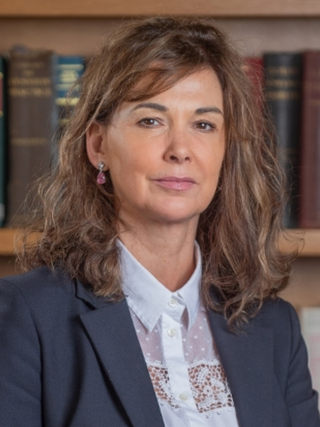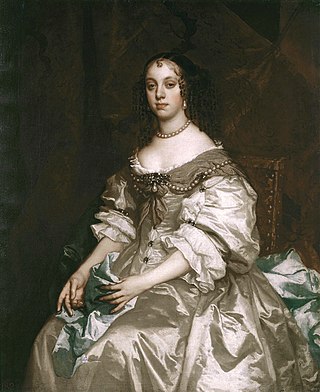Related Research Articles

The Dean Cemetery is a historically important Victorian cemetery north of the Dean Village, west of Edinburgh city centre, in Scotland. It lies between Queensferry Road and the Water of Leith, bounded on its east side by Dean Path and on its west by the Dean Gallery. A 20th-century extension lies detached from the main cemetery to the north of Ravelston Terrace. The main cemetery is accessible through the main gate on its east side, through a "grace and favour" access door from the grounds of Dean Gallery and from Ravelston Terrace. The modern extension is only accessible at the junction of Dean Path and Queensferry Road.

Sir David Wilkie was a Scottish painter, especially known for his genre scenes. He painted successfully in a wide variety of genres, including historical scenes, portraits, including formal royal ones, and scenes from his travels to Europe and the Middle East. His main base was in London, but he died and was buried at sea, off Gibraltar, returning from his first trip to the Middle East. He was sometimes known as the "people's painter".

Sir Henry Raeburn was a Scottish portrait painter. He served as Portrait Painter to King George IV in Scotland.

His Majesty's Advocate, known as the Lord Advocate, is the principal legal adviser of both the Scottish Government and the Crown in Scotland for civil and criminal matters that fall within the devolved powers of the Scottish Parliament. The Lord Advocate provides legal advice to the government on its responsibilities, policies, legislation and advising on the legal implications of any proposals brought forward by the government. The Lord Advocate is responsible for all legal advice which is given to the Scottish Government.

Sir John Watson Gordon was a Scottish portrait painter and president of the Royal Scottish Academy.

Sir William Allan was a distinguished Scottish historical painter known for his scenes of Russian life. He became president of the Royal Scottish Academy and was made a Royal Academician.

Dame Elizabeth Violet Blackadder, Mrs Houston, was a Scottish painter and printmaker. She was the first woman to be elected to both the Royal Scottish Academy and the Royal Academy of Arts.

Anthony Todd Thomson was a Scottish doctor and pioneer of dermatology.
A limner is an illuminator of manuscripts, or more generally, a painter of ornamental decoration. One of the earliest mentions of a limner's work is found in the book Methods and Materials of Painting by Charles Lock Eastlake (1793–1865).
"The treatises [on oil painting] cannot be placed later than the thirteenth, or beginning of the fourteenth, century. This was the age of Dante, and "the art which in Paris was called illuminating" (limning) is well illustrated by such guides." p. 45
The Royal Households of the United Kingdom are the collective departments that support members of the British royal family. Many members of the royal family who undertake public duties have separate households. They vary considerably in size, from the large household that supports the sovereign to the household of the Prince and Princess of Wales, with fewer members.

The title of Principal Painter in Ordinary to the King or Queen of England or, later, Great Britain, was awarded to a number of artists, nearly all mainly portraitists. It was different from the role of Serjeant Painter, and similar to the earlier role of "King's Painter". Other painters, for example Nicholas Hilliard had similar roles with different titles. "Principal Painter in Ordinary", first used for Sir Anthony Van Dyck, became settled as the usual title with John Riley in 1689.

Scottish art in the nineteenth century is the body of visual art made in Scotland, by Scots, or about Scottish subjects. This period saw the increasing professionalisation and organisation of art in Scotland. Major institutions founded in this period included the Institution for the Encouragement of the Fine Arts in Scotland, the Royal Scottish Academy of Art, the National Gallery of Scotland, the Scottish National Portrait Gallery and the Glasgow Institute. Art education in Edinburgh focused on the Trustees Drawing Academy of Edinburgh. Glasgow School of Art was founded in 1845 and Grays School of Art in Aberdeen in 1885.

Scottish art in the eighteenth century is the body of visual art made in Scotland, by Scots, or about Scottish subjects, in the eighteenth century. This period saw development of professionalisation, with art academies were established in Edinburgh and Glasgow. Art was increasingly influenced by Neoclassicism, the Enlightenment and towards the end of the century by Romanticism, with Italy becoming a major centre of Scottish art.

Portrait painting in Scotland includes all forms of painted portraiture in Scotland, from its beginnings in the early sixteenth century until the present day. The origins of the tradition of portrait painting in Scotland are in the Renaissance, particularly through contacts with the Netherlands. The first portrait of a named person that survives is that of Archbishop William Elphinstone, probably painted by a Scottish artist using Flemish techniques around 1505. Around the same period Scottish monarchs turned to the recording of royal likenesses in panel portraits, painted in oils on wood. The tradition of royal portrait painting in Scotland was probably disrupted by the minorities and regencies it underwent for much of the sixteenth century. It began to flourish after the Reformation, with paintings of royal figures and nobles by Netherlands artists Hans Eworth, Arnold Bronckorst and Adrian Vanson. A specific type of Scottish picture from this era was the "vendetta portrait", designed to keep alive the memory of an atrocity. The Union of Crowns in 1603 removed a major source of artistic patronage in Scotland as James VI and his court moved to London. The result has been seen as a shift "from crown to castle", as the nobility and local lairds became the major sources of patronage.

Scottish genre art is the depiction of everyday life in Scotland, or by Scottish artists, emulating the genre art of Netherlands painters of the sixteenth and seventeenth centuries. Common themes included markets, domestic settings, interiors, parties, inn scenes, and street scenes.
Sir James Lewis Caw LLD HRSA was a Scottish art historian, critic and gallery director. He argued for the existence of an independent and free-standing "Scottish school of painting" arising in the second half of the 19th century.

William John Thomson (1771–1845) was an American-born painter of silhouettes, portraits and miniatures who was active in Great Britain.
Events from the year 2021 in Scotland.
References
- ↑ Russell, Colin (12 April 2014). Who Made the Scottish Enlightenment?. Xlibris Corporation. ISBN 9781499091045 – via Google Books.
- ↑ The Laws of Scotland: Stair Memorial Encyclopaedia, Vol. 7 "The Crown", para 847
- ↑ "No. 12051". The Edinburgh Gazette . 30 June 1908. p. 705.
- ↑ "No. 14976". The Edinburgh Gazette . 23 June 1933. p. 527.
- ↑ "No. 16567". The Edinburgh Gazette . 10 August 1948. p. 357.
- ↑ "No. 20184". The Edinburgh Gazette . 11 November 1977. p. 1237.
- ↑ "No. 24959". The Edinburgh Gazette . 9 February 2001. p. 276.
- ↑ Scottish artist Dame Elizabeth Blackadder dies, BBC news, 24 August 2021.